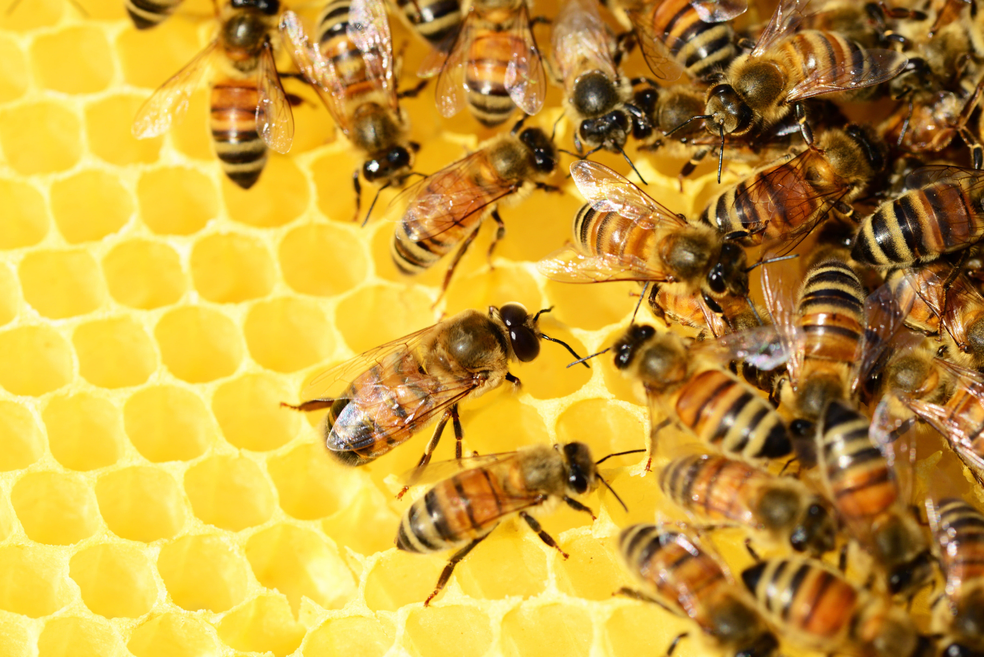From its roots in operative Masonry to its modern role as an emblem of unity and collective success within the lodge, the beehive continues to guide Masons today.
The Masonic beehive is an enduring symbol of the Craft, representing industry, unity, and shared purpose. While it appears in the Master Mason degree, its symbolic roots extend far beyond Freemasonry. In ancient Egypt, the beehive represented divine kingship and social order. In Christianity, bees symbolized resurrection, community, and moral virtue. By the time of the Enlightenment, especially in early America, the beehive had evolved into a powerful symbol of civic responsibility and productivity.
Freemasonry, which draws its teachings and symbolism from both the working tools of stonemasons and the natural world, adopted the beehive as a lesson in cooperative labor and moral duty. Just as the bees labor together to sustain the hive, Masons are called to support their Lodge and their communities through purposeful action.
Masonic Beehive Meaning
The Masonic beehive symbol holds several key meanings:
- Industry: Like bees tirelessly building and gathering, Masons are encouraged to be diligent and dedicated in their personal, professional, and Masonic lives.
- Unity: A hive thrives because every bee plays its part. In the same way, Masons build strength through shared labor and brotherhood.
- Structure: The beehive’s hierarchy reflects the importance of roles, leadership, and harmony in the Lodge.
As Sovereign Grand Commander Walter F. Wheeler, 33°, recently wrote in The Northern Light magazine, “Within the beehive, we see an intricate society, each bee diligently fulfilling its role for the greater good of the hive. This unity in purpose and shared responsibility is a guiding principle we, as Masons, should continually emulate.” His words reinforce the idea that the beehive is a call to collective effort, mutual respect, and harmony within the Lodge and beyond.
Masonic Beehive History
The symbolic importance of the Masonic beehive is well-established in Masonic ritual and literature. One of the earliest interpretations appears in The Freemason’s Monitor (1802) where Thomas Smith Webb describes the beehive as:
“An emblem of industry, and recommends the practice of that virtue to all created beings, from the highest seraph in heaven, to the lowest repitile of the dust…He that will so demean himself as not to be endeavouring to add to the common stock of knowledge and understanding, may be deemed to drone in the hive of nature, a useless member of society, and unworthy of our protection as Masons.” – Thomas Smtih Webbed, The Freemason’s Monitor, 2nd ed., 1802.
Webb’s explanation connects the beehive to human interdependence. Freemasonry, he writes, does not see man as self-sufficient but as a social being created to serve others and to labor collectively for the good of all. The beehive thus symbolizes the Mason’s duty to contribute meaningfully to his Lodge, his community, and the world.
Over a century later, Albert Mackey expanded on this idea in the first volume of his Encyclopedia of Freemasonry, noting that the bee was a symbol of obedient, organized labor as early as ancient Egypt. He wrote:
“Looking at the regulated labor of these insects when congregated in their hive, it is not surprising that a beehive should have been deemed an appropriate emblem of systemized industry. Freemasonry has therefore adopted the beehive as a symbol of industry, a virtue taught in the ritual…and in the Old Charges, which tell us that all Masons shall work honestly on working days, that they may live credibly on holidays.”
Taken together, these interpretations show that the Masonic beehive is not merely about diligence or discipline. It represents a deeper truth: that through shared labor and purpose, we build not only temples, but ourselves, and that work is both practical and sacred.
Is the Masonic Beehive a Common Symbol?
While not as instantly recognizable as the square and compasses, the Masonic beehive is still a widely respected and frequently used symbol within the fraternity. It appears in tracing boards, ritual lectures, Lodge artwork, and even in the naming of certain Lodges, such as Bee Hive Lodge No. 66 in Maryland. Its message of unity and industriousness remains central to Masonic teachings, especially in the Master Mason degree.

Esoteric and Alchemical Interpretations
Beyond its practical lessons on labor and unity, the beehive also holds deeper meaning in mystical and esoteric traditions. These interpretations may or can complement and enrich the teachings of Freemasonry, exploring ways the symbol has been understood as a metaphor for spiritual transformation, balance, and collective enlightenment across cultures:
- In alchemical symbolism, the beehive is seen as a “laboratory” where raw matter (experiences, knowledge, or spirit) is refined into something precious like honey or “gold.”
- In Kabbalistic tradition, the beehive reflects the Tree of Life, where each interconnected part plays a role in maintaining balance and enabling spiritual ascent. Additionally, the concept of tikkun olam, or repairing the world, parallels the beehive’s message: that through shared effort, we can heal and improve the world.
Why the Beehive Still Matters
While the square and compasses may be the most recognized symbol of the Craft, the Masonic beehive remains one of the most practical and inspiring. It reminds us that Freemasonry is not a solitary pursuit, but a shared experience built on cooperation, commitment, and the pursuit of something greater than ourselves.
From tracing boards and lodge artwork to symbolic quilts and ritual lectures, the beehive has endured because its message is timeless: work together, honor your obligations, and uplift those around you.
When Commander Wheeler recently reflected on this very idea, he was reminded that as every bee has a role in building a thriving hive, every Mason has a role in strengthening our Lodges and Valleys. In his words: “I ask each of you to find your place in the hive and help your Valley prosper. Just as the bees work together to create a harmonious and productive environment, let us do the same.”
To dive deeper into the symbols that shape our Craft, be sure to read the Ultimate Guide to Masonic Symbolism. You can also check out other Scottish Rite articles on specific symbols, including the square and compasses, the ark and anchor, and more.
Related Stories
Discover additional Scottish Rite blogs and news on this topic.
-
Manly P. Hall: Philosopher, Mystic, and Freemason
Famous Masons
Read More about Manly P. Hall: Philosopher, Mystic, and Freemason
-
Was Robert Burns a Freemason?
Famous Masons
Read More about Was Robert Burns a Freemason?
-
Celebrate Summer with Masonic Marketplace Must-Haves
News
Read More about Celebrate Summer with Masonic Marketplace Must-Haves



